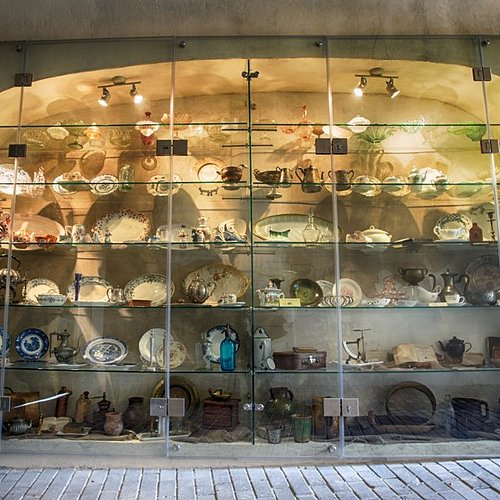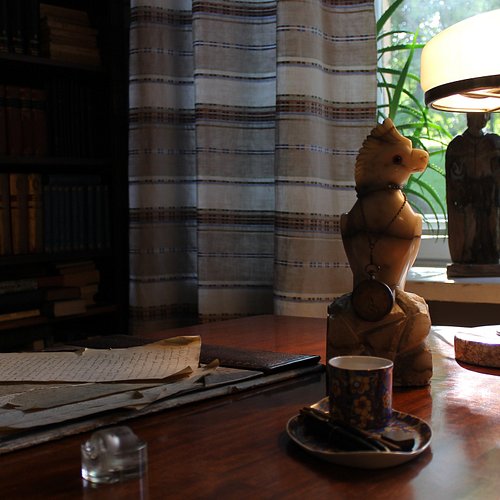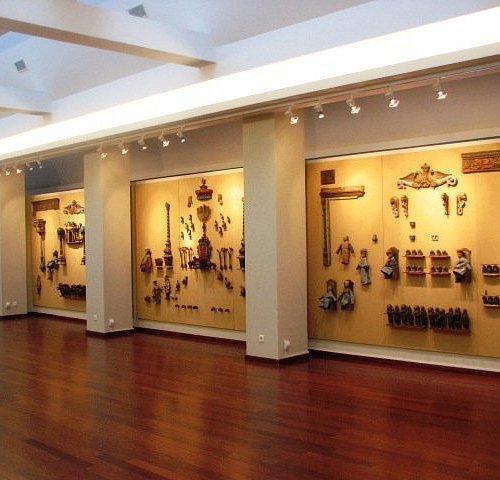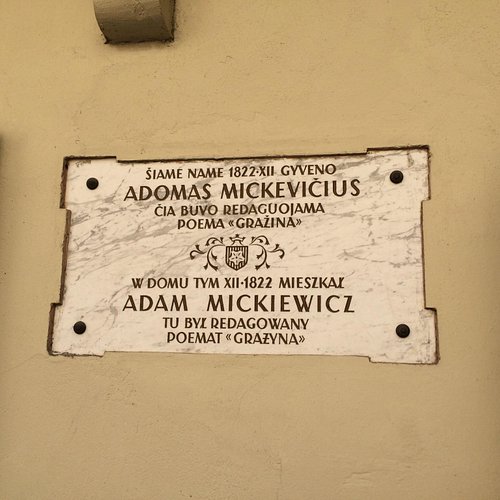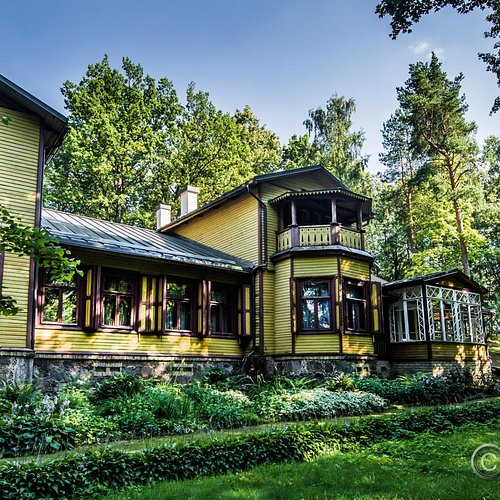10 Specialty Museums in Vilnius That You Shouldn't Miss
Vilnius, the capital of Lithuania, contains one of the largest surviving medieval quarters in Europe. Included on the UNESCO World Heritage List, Old Town contains almost two thousand medieval, gothic, renaissance, and baroque buildings, all centered on the neo-classical cathedral and town hall. Other popular attractions include the KGB Museum, located in a former Soviet prison, and the 13th century Higher Castle, which affords a glorious view of the city center.
Restaurants in Vilnius
1. Vilnius University Zoological Museum
2. Culinary Heritage Museum of Lithuania
Overall Ratings
5.0 based on 4 reviews
The museum presents more than 25000 exhibits. You will discover the culinary heritage of Lithuania by traveling into the culinary traditions of various times (18th to 20th centuries mostly).
3. The Venclova House Museum
Overall Ratings
5.0 based on 12 reviews
Museum exposition reflects the everyday life of Lithuanian intelligentsia in Vilnius in the 40s and 50s of the 20th century. Many enlightened persons of Lithuania visited this house and associated here. Tomas Venclova, the poet, essayist, spacious-mind publicist, professor of Yale University (USA), grew up here, surrounded by the things exposed in the museum.
4. Feju Slenis
Overall Ratings
5.0 based on 1 reviews
Welcome to Feju Slenis - Mistyland! Dive into magical wood full of hand made fairies, elfs and gnoms! Organising performances according to the books with a storyteller (on demand for the English language) and on the weekends. Celebrate creative birthdays or be the hero of your own story! Possible workshops on request: Fairy headband, Night house-lamp, Fairy making, perfume creation with essential oils.
5. Vincas Mykolaitis-Putinas Memorial Apartment-Museum
Overall Ratings
5.0 based on 2 reviews
Vincas Mykolaitis-Putinas (1893–1967) – famous poet, playwright, prosaist, translator, professor of literature science, one of the most celebrated Lithuanian writers of the XXth century. Museum collection consists of authentic things that belonged to V. Mykolaitis-Putinas in three memorial rooms (the study, the parlor and the sleeping-room) where the authentic atmosphere is restored.
6. KGB Museum (Genocido Auku Muziejus)
Overall Ratings
4.5 based on 3,294 reviews
Reviewed By Impavid574
A must-do visit if ever there was one. A tangible insight into the potential for man's inhumanity to man. The water torture cells were somehow the worst of it, but what jars is the fact that the building is in a city centre street which passers-by must have walked alongside while the unfortunates inside were enduring their nightmares. It helps give you an understanding of the very public way Lithuanians express their religious devotion - to get through the Soviet occupation and the Gestapo interlude must have required an extraordinary faith in the possibility of a better life. This is education in its rawest form and not to be missed
7. Museum of the Custom
Overall Ratings
4.5 based on 11 reviews
Museum was opened at 1994 and renovated at 2008. Exposition of the museum is very well designed. It tell abou Contrabanda history in Lithuania.from XV century till present days. Rich multimedia and interactive displays. Museum exposition is in Lithianian and English, visiting is free of charge.
8. Vilna Gaon State Jewish Museum
Overall Ratings
4.5 based on 151 reviews
The Vilna Gaon State Jewish Museum is the only Jewish museum in Lithuania. Currently it has three open exposition sites: the Tolerance Center, the Holocaust Exposition and the Memorial Museum of Paneriai. Each of the sites is located in a venue of historical importance for the Jewish community. The indicated working hours are of the Tolerance Center, which hosts unique judaica and art exhibits, permanent and temporary exhibitions. For the working hours of the Holocaust Exposition and the Memorial Museum of Paneriai, please visit our website.
Reviewed By Hawk470 - Baltimore, United States
Named for the foremost non-Hasidic religious leader of his time, the Vilna Gaon State Jewish Museum includes several locations – the Tolerance Center, the Holocaust Exposition (nearby), and the Memorial at Paneriai. This review covers the Tolerance Center which includes Judaica, historical exhibits and art galleries. The museum has something for everyone. We particularly enjoyed the section on the history of Jewish life in Lithuania illustrated with paintings and photographs accompanying very informative and well-written text. The exhibit of Bartosz Fratczak’s photographs of the remaining traces of vanished Jewish communities in Lithuania’s more rural localities evokes these lost worlds with exquisite and tragic black and white photographs and captions. The most revelatory section was certainly the exhibit of the paintings of Samuel Bak, a Vilnius-born artist, who held is first exhibit as a nine-year-old in the Vilnius Ghetto. His paintings display very fine brush technique and a powerful eye for detail in horrific and beautiful scenes. A number of the paintings have a surreal, almost Dali-esque sensibility, but without the preciousness and lack of emotional resonance that those terms imply. Samuel Bak’s work is as deeply emotional and profoundly thought provoking as it is magnificently rendered. Take your time with his paintings. They draw you in and as you look, you see layers of detail reminiscent of the finest early Renaissance paintings with their subjects in the foreground and narrative details embedded in the background. Be sure to watch the video about his life and work and how his life, including how he survived the Holocaust, illuminates his work. If you like to walk, the route from the Choral Synagogue to the Vilna Gaon State Jewish Museum and then to the Holocaust Exhibition (The Green House), will give you an informative and moving introduction to Jewish life in Lithuania past and present. The total walking time, one-way at a relaxed pace, is under half an hour.


